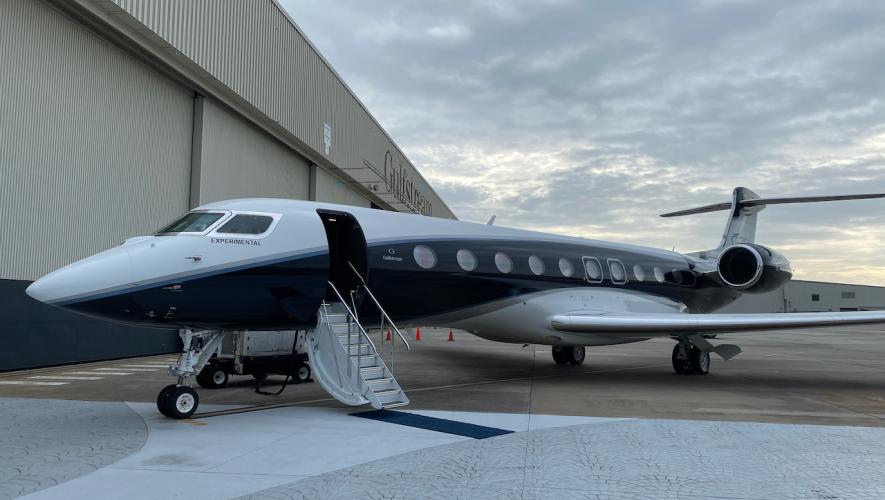In its final report into the loss of an Air France Airbus A330 over the South Atlantic on June 1, 2009, French air accident investigation agency BEA (Bureau d’Enquetes et d’Analyses) has managed to explain most–but not all–of the pitch-up inputs by the pilot who was flying the aircraft at the time of the accident during the last minutes of Air France Flight 447. The report, published on July 5, said that the pilot flying (PF) kept pulling the stick and this caused the Airbus A330 to stall and prevented a recovery.
In a tense press conference held last Thursday at Le Bourget Airport in Paris BEA director Jean-Paul Troadec and his team pointed at human-machine interface issues that made the situation extremely confusing for the crew. All 228 occupants died when the aircraft, flying from Rio to Paris, crashed at night while negotiating a region with heavy thunderstorm activity. BEA had published an interim report in July 2011.
A major new finding in the final report concerned the flight director, which normally displays symbology on the pilots’ primary flying displays that give guidance on control inputs to reach a desired steady-state flightpath. After the autopilot and autothrottle disengaged, as the flight control law switched from normal to alternate, the flight director’s crossbars disappeared. But they then reappeared several times. Every time they were visible, they prompted pitch-up inputs by the PF, investigators determined. It took them a long time to “rebuild” what the flight director displayed since this is not part of the data recorded by the flight data recorder.
The BEA acknowledged that the PF might have followed flight director indications. This was not the right thing to do in a stall but it seems that the crew never realized that the aircraft was in a stall. Moreover, the successive disappearance and reappearance of the crossbars reinforced this false impression, the investigators suggested. For the crew, this could have suggested their information was valid.
None of the pilots recognized that the flight director was changing from one mode to another because they were just too busy. The PF may have trusted the flight director so much that he was verbally agreeing to the other pilot’s pitch-down instructions, while still actually pitching up.
The BEA’s report includes significant recommendations about the flight director. One of them calls for European Aviation Safety Agency to review its “display logic.” The flight director should disappear or present “appropriate orders” in a stall.
The investigators made it clear that from the start the crew should have followed a procedure called “unreliable indicated airspeed,” which involves disconnecting the flight director. They also concluded that the still-connected flight director behaved in a way that is not specific to the A330. However, Leopold Sartorius, head of the investigation’s avionics systems working group, said he did not conduct an exhaustive study on other airliners to determine whether the flight director would have behaved in the same way.
The BEA investigation has explained why the PF pulled his stick after the autopilot disengaged. But he also pulled the stick back at the beginning of the fatal sequence. This was probably to correct what was later determined to be an altimeter error.
The only remaining question concerns the period between autopilot disengagement and the first stall warning. During these five seconds, the PF kept giving nose-up inputs to the controls, but the BEA can’t say why.
The crew (or part of it) trusted the flight director but seemed to ignore the stall alarm even though it sounded more than 70 times. While this fact amazed many industry experts when it was revealed a year ago, the BEA has found possible explanations.
First, the crew was not familiar with this audio alarm, due to a lack of training. More generally, the BEA refers to shortcomings in their “knowledge of the aircraft and its protection modes.” A review of pilot training “did not provide convincing evidence that the associated skills had been correctly developed and maintained.”
Also, the crew may have thought the buffeting, aerodynamic noise and even an acceleration cue on the primary flight display were symptoms of excessive speed. The aircraft, in fact, was in completely the opposite situation in that it was flying far too slowly.
Another reason for having ignored the stall alarm could have been a matter of sheer perception, Troadec said. “Audio alarms are no longer heard in some situations,” he admitted. This has prompted the BEA to recommend the addition of a visual stall warning.
Among the new recommendations are some relatively surprising ones, about problems with the safety oversight of Air France. The BEA refers to failures in inspections conducted by the French civil aviation authority (DGAC), which it said, “did not bring to light the fragile nature of the crew resource management.” Nor did DGAC officials identify the weaknesses of the two copilots in manual airplane handling.
BEA concluded that the DGAC needs to be reorganized to make its safety oversight function more effective. Another recommendation is that there needs to be better recruitment and training of safety inspectors.
Troadec labeled the crew’s work during the fatal few minutes as “destructured.” One difficulty was the lack of a clear display of the airspeed inconsistencies even though the computers identified them. Some systems generated failure messages only about the consequences but never mentioned the origin of the problem. This prompted a recommendation that a blocked pitot tube should be clearly indicated to the crew on the flight displays.
Investigators determined that the A330 pilots being startled by the chain of events played a major role in the destabilization of the flight path and the BEA report recommended more training for dealing with unexpected situations. Ultimately, safety comes from both the pilots’ cognitive abilities and the signals they receive, Troadec concluded.







